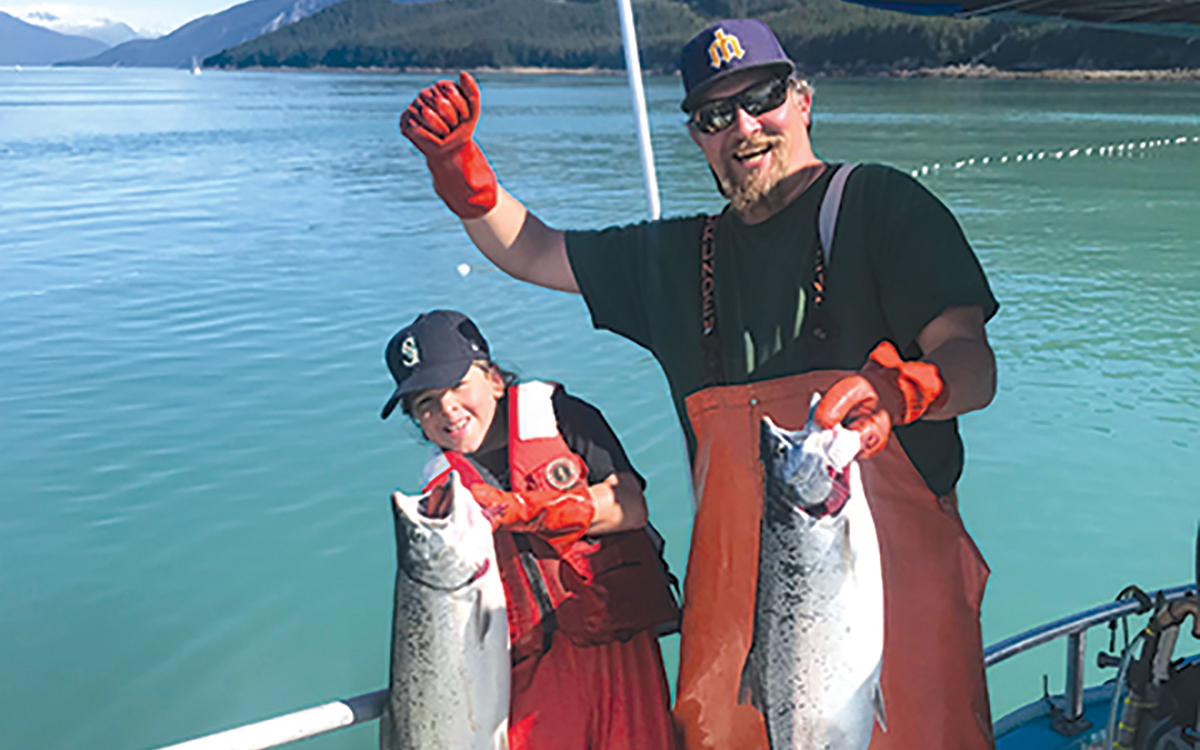My whole life I have been obsessed with salmon. And for my whole life, my Alaska home has been the place to be for someone with my particular affliction. As a current gillnetter, former fly-fishing guide and former communications director at the Alaska Seafood Marketing Institute, I have talked a lot about how amazing it is that back in 1959 the idea of sustainable fisheries management was written into the state constitution as Alaska transitioned from a territory to the 49th state.
The push to become a state was in large part to take control of salmon management from the feds, who were in cahoots with corporate fish traps mismanaging the resource straight toward extinction. Back then, we established a modern, science-based harvest model that is the envy of the world today. Do I remember first hand? No, of course not, I was born decades later, but I read stuff.
This is another defining moment for Alaskan salmon fisheries. The existential threat this time comes on land. But the scene looks familiar: corporate greed pushing lax governmental oversight. Today we face a new generation of massive mines and mine expansions of unprecedented size and scope that — unless something changes — will wipe out salmon spawning and rearing streams, with the potential to take out whole watersheds. The feds are fast-tracking these mines and rolling back common-sense accountability measures like mandatory deposits against future catastrophes.
These mines are ticking time bombs that threaten my family business and those of more than 30,000 American fishing families who work in Alaska and pump more than $4 billion into the U.S. economy every year.
Most foreign mining companies practice a cut-and-run strategy — whereby they extract the resource and then bankrupt their local subsidiary while skating away from any clean-up costs. North America is littered with Super Fund sites that are a testament to this practice.
Current law makes it legal for the recently approved Donlin Mine and the proposed Pebble Mine to wipe out dozens of miles of salmon streams and thousands of acres of nearby wetlands without protection for local fisheries.
Time and time again, corporations walk away from responsibility of toxic spills right in the heart renewable, sustainable and productive salmon areas we call home. Why risk the entirely foreseeable and preventable disaster of another toxic tailing pond disaster like the Mount Polley event in British Columbia?
That is what could happen under current law and why Alaska’s Ballot Measure 1 — the Stand for Salmon initiative — is so important. Up for a vote on Nov. 6, yes on 1 would move forward science-based standards to hold corporations accountable for repairing salmon streams and paying for clean-up. That way, maybe Alaska’s salmon runs won’t meet the same sad fate of other great salmon strongholds from Europe to Maine to California before they were bankrupted by poor management and overdevelopment.
In a perfect world, we would fix this by legislative process in the capitol in Juneau. But unfortunately, many Alaska legislators only respond to heavy industry, while subsistence, sport and commercial fishermen rarely get a fair shake in the building.
Measure 1 is a way to put Alaskans in charge of salmon habitat, in much the same way the state took control of salmon harvest policies more than 60 years ago.
By passing Measure 1, we will get the Alaska Legislature’s attention and make sure the entire state appreciates what salmon and their home habitat mean to all of us who depend on salmon. It will give fishermen a voice on these huge mines in the future through public comment requirements on large projects in salmon habitat.
Fishing is the lifeblood of Alaskan communities and a crucial section of the American fishing landscape. While the headlines broadcast mixed results in Alaska salmon harvests this year, we still saw harvests of more than 100 million fish, nearly three times the fish we saw at statehood, or so the data says.
I feel so privileged to be able to bring the amazing seafood from Alaska to people who appreciate it. Alaska is one of the last places where thousands of us can do that, but only if we protect what we’ve got, as our those before us did.
Join me in standing up for salmon at this crucial moment. Vote Yes on Alaska’s Ballot Measure 1.
It would be something for us to proudly tell our kids about.







